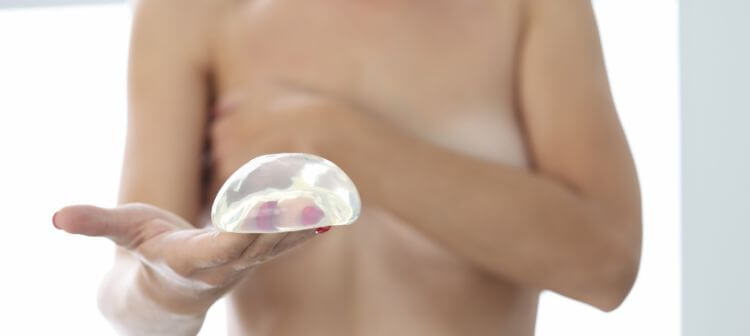Breast augmentation remains the UK’s most requested cosmetic procedure and is designed to enhance the size and shape of the breasts. Your options include breast augmentation with implants, fat transfer to the breast and the hybrid breast augmentation, the latter emerging as an increasingly popular choice.
Here, we’ll explore what each procedure entails, including safety, longevity, potential complications, natural feel, and the lifestyle considerations that might influence your choice.
Breast augmentation with implants
This is still considered the gold standard of breast augmentation, as your Karidis Clinic surgeon can use breast implants to produce a customised, bespoke procedure that achieves the patient’s desired breast size and shape.
Advantages of breast augmentation with implants:
- Predictable results: implants provide predictable and immediate results, allowing for precise control over the size and shape of the breasts.
- Longevity: breast implants are known for their durability, with many patients enjoying long-lasting results.
- Proven safety: breast augmentation with implants has a long history of safety, with rigorous testing and advancements in implant technology contributing to reduced risks of complications.
- Outcome: modern implants come in various shapes and textures to enhance the natural look and feel; combined with your surgeon’s skill, it is possible to create a beautifully natural result.
Disadvantages of breast augmentation with implants:
- Increased risks specific to implants: implant rupture and capsular contracture are rare but should be considered.
- Loss of sensation: there can be changes in nipple and breast sensation after an augmentation, particularly if larger implants are used.
- Need for further surgery: it’s often quoted that your breast implants will need to be replaced every ten years, but for most patients that isn’t the case as they are perfectly happy with their implants and there have been no changes to them that need addressing. However, patients must be aware that revision breast surgery may be required at some point or on multiple occasions.
Fat transfer to the breast
Fat transfer to the breast, also known as autologous fat grafting, has gained popularity as a more natural and minimally invasive alternative to traditional breast augmentation. During this procedure, Mr Mark Ho-Asjoe will harvest excess fat from one part of the body through liposuction and transfer it to the breasts to achieve a subtle breast enhancement.
Advantages of fat transfer:
- Natural appearance: fat transfer provides a natural appearance by using the patient’s own tissue, avoiding synthetic implants.
- Dual benefit: patients can benefit from body contouring through liposuction in addition to breast enhancement, addressing two concerns in a single procedure.
- Minimal scarring: only small incisions are made during the liposuction part of the procedure, and then the fat is grafted into the breast using a fine cannula, so scarring is minimal compared to traditional breast augmentation with implants.
- Long-lasting results: the fat that is successfully grafted in the breast should remain permanently
Disadvantages of fat transfer:
- Limited size increase: unsuitable for those expecting a significant increase in cup size – you usually get a half to one full cup size increase and may require more than one procedure to achieve the desired size.
- Requires a stable body weight: you must be at or near your ideal body weight, as losing weight in the future will affect your results.
- Not every candidate is ideal: patients that are very slim may not have enough adipose tissue for harvesting.
- Unpredictable results: although techniques continue to improve, not all fat will successfully graft in the breast, and some fat tissue will always be absorbed. This varies from patient to patient.
Hybrid breast augmentation
Hybrid breast augmentation is a cutting-edge approach employed by our highly experienced breast surgeon Mr Mark Ho-Asjoe. It combines elements of both fat transfer and breast implants.
This technique involves using autologous fat harvested from the patient’s own body combined with breast implants to achieve a customised and natural-looking result. The procedure begins with liposuction to harvest excess fat from areas like the abdomen or thighs. The harvested fat is then purified before being strategically injected around the breast implants. This method aims to provide a more natural look and feel by incorporating the patient’s own tissue and allowing Mark to sculpt the breast shape.
Advantages of hybrid breast augmentation:
- Natural feel: hybrid augmentation aims to achieve a more natural feel by integrating the patient’s own fat tissue with implants, mimicking the texture of natural breasts.
- Camouflage: fat tissue can be used to augment the breast where the implant’s edges could be visible.
- Adds fullness: fat transfer can add fullness to the upper pole in slim patients who want increased cleavage.
- Customisation: the combination of implants and fat transfer allows for a high level of customisation, enabling Mr Ho-Asjoe to address specific patient preferences and anatomical considerations.
- Increased placement options: when combined with fat transfer, the implant can often be placed successfully in the subglandular plane rather than underneath the muscle which is often preferred by those patients committed to weightlifting.
- Reduced risk of complications: since the procedure involves a smaller volume of implants, there may be a reduced risk of complications such as rippling or capsular contracture.
Disadvantages of hybrid breast augmentation:
- Risks: the same surgical and implant risks as a breast augmentation.
Each breast augmentation technique, whether hybrid augmentation, fat transfer, or breast augmentation with implants, has its unique advantages and considerations. The choice between these techniques ultimately depends on individual patient goals, preferences, and anatomical considerations, and this will be discussed in full during your consultation so you can make an informed choice.
















